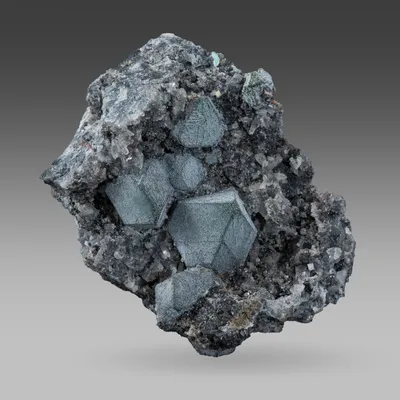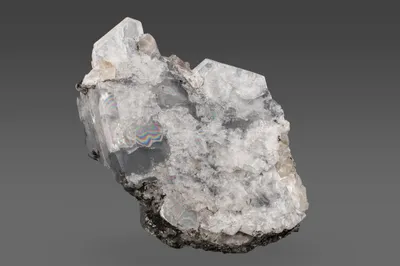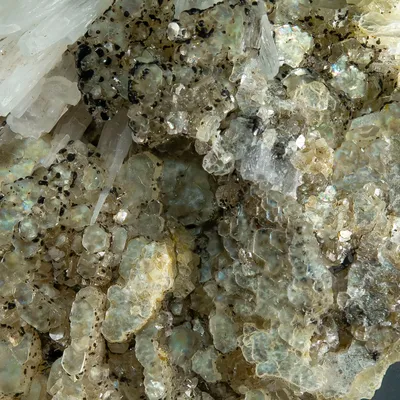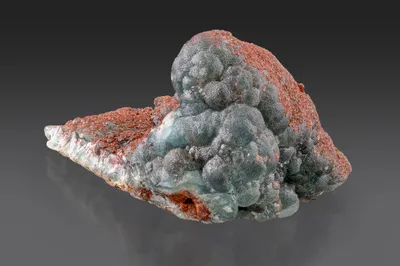Mineral Species
Kegelite
Type Locality
Yes
Composition
Pb8Al4Si8(SO4)2(CO3)4(OH)8O20
Crystal System
Monoclinic
Status at Tsumeb
Confirmed (type locality)
Abundance
Extremely rare
Distribution
Second oxidation zone
Paragenesis
Supergene
Entry Number
Species; TSNB191
Type Mineralogy
Medenbach and Schmetzer (1975) described an unusual and complex second oxidation zone paragenesis that included, inter alia, the lead silicate minerals alamosite and melanotekite and a further unknown lead silicate (see general notes). Kegelite, IMA 1974-042, was described by Medenbach and Schmetzer (1976) and is named for Herr Friedrich Wilhelm Kegel, general manager of the Tsumeb mine between 1922 and 1932 and a director of OMEG until 1938. Dunn et al. (1990), working with co-type material from Tsumeb provided unit cell data and a revised formula, and a structural hypothesis for kegelite was proposed by Braithwaite (1991) based on infrared spectroscopy. The holotype specimen (of Medenbach and Schmetzer 1976) is conserved at the Mineralogisch-Petrographisches Institut, Mineralien-sammlung, Universität Heidelberg, in Germany (catalogue number 10’11’12) and a neotype specimen, on which the redefinition of the species by Dunn et al. (1990) was based, is housed at the Smithsonian Institution in Washington D.C. (catalogue number 147460).
General Notes
The type specimen of kegelite was described in detail by Medenbach and Schmetzer (1975), at which time the presence of alamosite crystals of unprecedented quality provided arguably the main interest. The exact location from which the specimen originated was not recorded, but it was known to be from the second oxidation zone. A large (80 mm) crystal of leadhillite and several smaller blades of anglesite grew on an encrustation of hematite and mimetite crystals lining a vug in massive sulphide ore (comprising galena, germanite, tennantite, and a little quartz). Sprays of alamosite crystals (to 10 mm) rested directly on the mimetite/hematite, clearly predating the anglesite and the leadhillite. Also predating the anglesite were rare spherules of pink, acicular fleischerite crystals. Both the anglesite and the leadhillite were spotted with melanotekite, while minute white flakes of kegelite (unidentified at that time) were noted on some of the anglesite crystals.
Kegelite presents as aggregates of minute, platy, pseudohexagonal crystals, individually about 30 µm across and just 1 µm thick (Medenbach and Schmetzer 1976). The colour is off-white with a pearly lustre which Pinch and Wilson (1977) noted as being similar to otavite.
Keller (1977a) recognises the following "rare mineral paragenesis":
R/1: primary sulphides >> wulfenite >> alamosite >> kegelite >> leadhillite >> cerussite.
An expanded version of this paragenesis is presented by Keller and Bartelke (1982; page 146).
Gebhard (1994) stated (incorrectly) that kegelite was the first lead silicate discovered at Tsumeb; in fact both alamosite and melanotekite were identified prior to the description of kegelite. He also listed susannite as an additional member of the lead silicate paragenesis.
Associated Minerals
alamosite; anglesite; cerussite; fleischerite; galena; hematite; larsenite; leadhillite; kaolinite; macphersonite (?); mathewrogersite; melanotekite; mimetite; plumbotsumite; quartz; queitite; surite (?); susannite; willemite; wulfenite; zharchikhite






